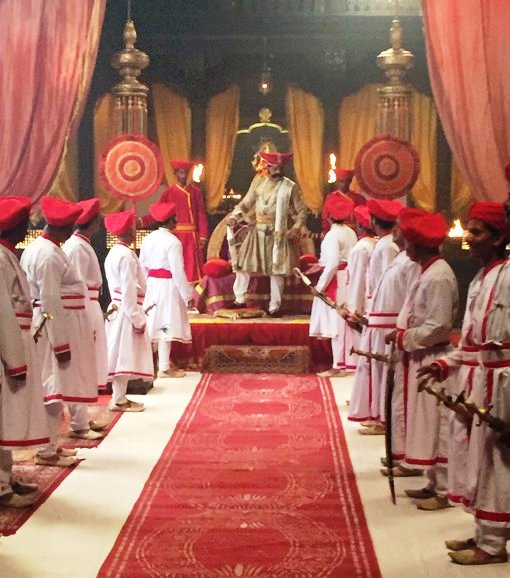R Balasundaram (Bala Sir) would require no introduction for Insurers and insuring public – daily he intrigues with smart Qs on Cricket in FB – more than the answers, one perhaps need to dig and enjoy the wealth of info that is hidden !
Today’s Q looks innocently simple and straight forward : - “With over 5000 runs in Test cricket and a batting average of 50, this batsman played for the erstwhile domestic powerhouse, Holkar in the Ranji Trophy. What is more he scored a double century in a Ranji final too. Identify this batsman !” – would you like to give it a try !!
Today, it is already answered – the answer takes to a timeless
Ranji finals in Mar 1945 when Bombay making 462 & 764 beat Holkar 360 &
492 ! - now comes the twist, the
answer is far away from obvious ! The
list of double century makers in the finals of Ranji trophy history includes
: Sunil Gavaskar, CK Nayudu, Ajit Wadekar,
Rahul Dravid, Gundappa Viswanath, Vijay Hazare, Vijay Merchant, Ashok Mankad
are in that elite list – one immediately
thought of BB Nimbalkar, who is often
the Cricket Q for the feat of scoring 443 not out for Maharashtra against
Kathiawar in a Ranji Trophy match at Pune in Dec 1948.
The player who is the answer was so famous that he was the Brylcreem boy of yesteryears. He was a breathtakingly talented batter, renowned for the latest of sweeps, who had all the cavalier abandon and audacity of youth, a fine fielder and a dangerous, unorthodox left-arm spinner. He also made the fastest triple-century in first-class history; excelled at football - capped 11 times!
Before that some history of Holkar for which team the legend played
!! – we did not read anything in our history books about Holkar dynasty. Malhar Rao Holkar (1693 –
1766) was a noble subedar of the Maratha
Empire. One of the foremost commanders of the Maratha
Empire (1760), he participated in the great victory in the Battle of Delhi
(1737), and the defeat of the Nizam in the Battle of Bhopal. He was also part
of the campaign that wrested Vasai from the Portuguese in 1739. From 1748 onwards, Malhar Rao Holkar's
position in Malwa became firm and secure.
The Holkar dynasty was a Hindu Maratha royal house in India. The Holkars ruled as Maratha Rajas, and later as Maharajas of Indore in Central India as an independent member of the Maratha Empire until 1818. Later, their kingdom became a princely state under the protectorate of British India. The dynasty was founded by Malhar Rao, who joined the service of the Peshwas of the Maratha Empire in 1721 – the head was known as Holkar Maharaja. The Third Anglo-Maratha War (1817–1818) was the final and decisive conflict between the British East India Company (EIC) and the Hindu Maratha Empire. It began with an invasion of the Hindu Maratha territory by British East India Company troops, the largest such British controlled force massed in India. The troops were led by the Governor General Hastings supported by a force under General Thomas Hislop. The Peshwa was eventually captured and placed on a small estate at Bithur, near Kanpur.
Getting back to the Cricket Q – answer to Bala is ‘Denis Compton’ – yes the famous Compton who excelled for England. Denis Charles Scott Compton CBE (1918 – 1997) played in 78 Test matches for England and spent his cricket career with Middlesex. He was also an accomplished footballer, who played most of his football career at Arsenal. A right-handed batsman and left-arm unorthodox spin bowler, Compton is regularly credited as one of England's most remarkable batsmen. Stand at Oval and at Lord’s have been named after him.
Compton
was born and brought up in what was then the urban district of Hendon, which
later became part of Greater London; By
the late 1930s, Compton was one of England's finest batsmen, and remained at
the top of his profession for some twenty years. Compton earned his first England cap against
New Zealand in 1937. At 19 years and 83 days, he remains the third youngest
England debutant ever. He scored his
first Test century aged just 20 years and 19 days in 1938 against Don Bradman's
touring Australians. This broke the
record, set by J.W.Hearne in 1911, for the youngest Test century by an England
batsman, and remains the record to this day.
As
with many other sportsmen of his generation, he lost some of his best years to
the Second World War, during which he served in the army in India. He was
posted at Mhow, Central India. He was granted permission to play for the Holkar
team in the Ranji Trophy. He played
against his hero Keith Miller in the match at Calcutta between the Australian
Services team and East Zone. Against Bradman's Invincibles in 1948, Compton was
England's standout performer in a losing cause. On the MCC tour of South Africa 1948–49 he
scored 300 against North-Eastern Transvaal in just a minute over three hours. He
toured Australia for 1950–51 Ashes series as vice-captain, the first
professional in the 20th century to be awarded the position, but had a dismal
tour because of a recurring knee problem caused by an old football injury.
Interesting to know that some foreign players too have played in our National tournament – the Ranji trophy.
29.12.2021
Compton pica ck : Historic Cricket Pictures - @PictureSporting




No comments:
Post a Comment